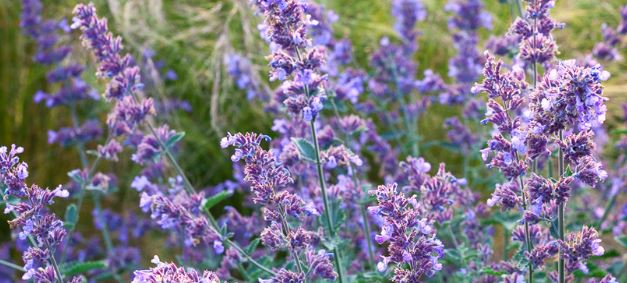
Nepeta x faassenii, commonly known as Catmint, is a popular garden plant in the UK that produces attractive blue-purple flowers and has a long flowering period from early summer to autumn. It is a low-maintenance perennial that is easy to grow, and it is tolerant of a wide range of growing conditions, making it a great choice for both experienced and novice gardeners.
In this article, we will provide you with all the information you need to successfully grow Nepeta x faassenii in the UK summer.
- Planting location and soil requirements Nepeta x faassenii grows best in full sun, but it can also tolerate partial shade. It prefers well-draining soil that is rich in organic matter, but it can also grow in sandy or clay soils. Before planting, make sure to prepare the soil by removing any weeds, rocks, or debris and adding compost or well-rotted manure to improve soil structure and fertility.
- Watering and fertilization Once planted, Nepeta x faassenii requires regular watering, especially during the summer months when temperatures can be high. It is best to water the plant deeply once or twice a week rather than frequent shallow watering, which can promote shallow root growth. Adding a layer of organic mulch around the plant can help to retain moisture and regulate soil temperature.
Nepeta x faassenii does not require frequent fertilization, but a balanced, slow-release fertilizer can be applied in early spring to promote healthy growth and flowering.
- Pruning and maintenance Nepeta x faassenii is a low-maintenance plant that requires minimal pruning. However, deadheading the flowers regularly can help to prolong the blooming period and promote the growth of new flowers. In autumn, once the flowering period is over, the plant can be cut back to the ground to prepare for the winter.
- Pest and disease control Nepeta x faassenii is generally pest and disease resistant, but like all plants, it can be affected by certain pests and diseases. Aphids and spider mites are the most common pests that can attack the plant. These can be controlled by spraying the plant with a solution of insecticidal soap or neem oil. Powdery mildew and leaf spot are the most common diseases that can affect Nepeta x faassenii. These can be prevented by avoiding overhead watering, promoting good air circulation, and removing any infected plant material.
- Companion planting Nepeta x faassenii is a great companion plant for a variety of other garden plants, including roses, peonies, and ornamental grasses. It can also be used to create a border or a ground cover around taller plants. Its attractive blue-purple flowers and aromatic foliage can also help to attract pollinators to the garden.
In conclusion, Nepeta x faassenii is a versatile and easy-to-grow perennial that is perfect for the UK summer garden. With the right planting location, soil preparation, watering and fertilization, pruning and maintenance, pest and disease control, and companion planting, you can enjoy a beautiful and healthy Nepeta x faassenii plant that will bloom all summer long.